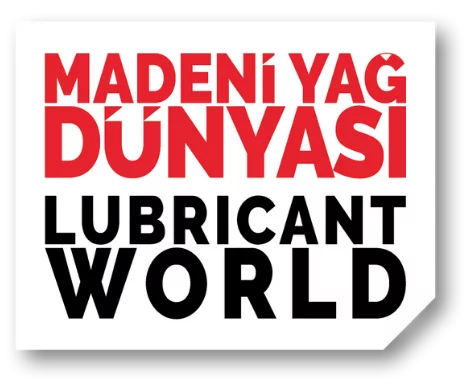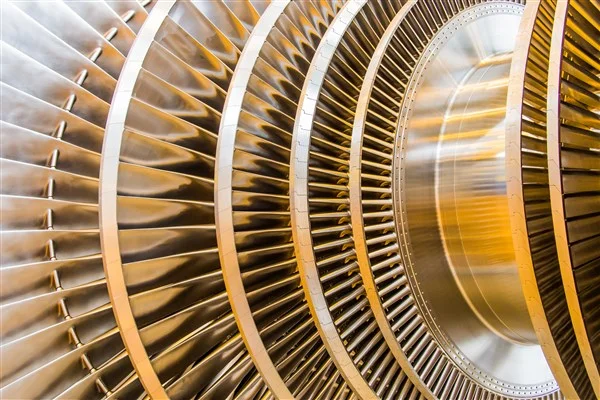Paolo Muscetta
Development & Technical Assistance
Industrial Products & Specialties Manager
Lubricants & Special Product Business Unit
Eni Refining & Marketing
Energy saving and efficiency concepts have been a focus for lubricant manufacturers recently. There are many successful products that offer very good efficiency results. And now, Eni offers a low viscosity lubricant for turbomachineries that heralds energy saving for these big machines.
Environmental awareness is increasing everywhere in the world and in every sector of human activities; different solutions have been developed to increase the sustainability of products in the fuels field but we can’t say the same thing for lubricants.
In the lubricants field, more attention has been given to the environmental impact of lubricants due to leakage or total loss lubrication, for this purpose it has been defined the environmentally acceptable lubricants “EAL”, that is readily biodegradable, not bio-accumulative and with low aquatic toxicity.
In these last years, a new approach is emerging that concerns the use of lubricants to improve the efficiency of machinery obtaining a reduction of fuel consumption and thus the greenhouse emissions. This approach has been adopted to develop a new class of hydraulic oils with very high viscosity index for earth moving machine; unfortunately the advantage claimed in this field is difficult to be measured due to the size of machine (low power) and the working conditions (not continuous) as conditioned by the operator’s guide. Instead, in the oil & gas field the energy saving lubricants could play a crucial role to increase the efficiency of turbomachinery where there is a strong commitment of OEMs to increase the efficiency of gas/steam turbines and compressors.
The continued market demand to have more efficient machines has motivated manufacturers to look for improvements even in the area that have never been explored until now -the lubricant- not seen only as an ancillary component but as a vital part of the turbine design. Eni, with years of experience in the turbine oil field based on proprietary technology, accepted the challenge to develop an innovative energy saving product in 2010, and in partnership with Baker Hughes General Electric (BHGE) conceived the idea to work together to increase the efficiency of industrial turbomachinery by reducing the losses due to viscous friction on lubricated parts.
It was commonly known that reducing the oil viscosity increases the fuel efficiency, but this one was the first time that someone was doing it on these machineries.
Since many years the viscosity of lubricating oil for industrial turbomachinery application is a predetermined parameter and basically an industry standard set on two reference values: 32 cSt and 46 cSt at 40°C. After extensive discussions, the decision was taken to approach the study of low viscosity oils, 15 cSt and 22 cSt at 40°C, in order to achieve the following goals:
- increase the overall machinery efficiency by reducing the mechanical viscous losses and relevant heat generation,
- improve bearings lubrication behavior and minimize pad temperature at very high shaft sliding speed of advanced high-performance turbomachinery,
- reduce the oil flow requirement and optimize design of lube oil systems.
Aiming to build a rigorous and reliable process, it was defined a development plan which combined the theoretical and analytical study with an extensive experimental activity based on incremental approach from component to machinery system level.
At the end of this process, after passing all the tests, Eni launched an “energy saving” low viscosity lubricating oil into the market in 2015, Eni OTE GT 15. This has been possible thanks to Eni’s extensive knowledge in the turbine oil field and the collaboration with BHGE.
From the beginning of the project, it was clear that to break down the standard technology limits, Eni had to focus on a new additive package Eni MX 5021 with excellent performance in terms of oxidation and deposit control with a strong anti-wear and extreme pressure (EP) property to compensate the lowering of viscosity.
This additive package Eni MX 5021 combined with a blending of synthetic base oils allowed the achievement of the target. The package is produced under Eni technology in Eni’s additive production plant located in Robassomero.
Here Eni produces its own branded Lubricant Additives for all applications: PCMO/HDDO, Marine, Industrial and a wide range of components (PPD, detergents, dispersants, anti-oxidants, etc…). All packages meet several official approvals from API, ACEA and OEM’s.
Eni OTE GT 15 shows excellent properties:
- strong oxidation resistance;
- the RPVOT is doubled compared to typical value of ISO VG 32 (Figure 1);
- excellent anti-wear properties: despite of its low viscosity:
– the load capability is comparable to ISO VG 32 proved by FZG test;
– this result is particularly relevant considering that low viscosity could have potentially a negative impact on the anti-scuffing properties;
- outstanding air release, (Figure 2):
– this means a higher oxidation control, an extended lifetime of the oil charge and higher protection against deposit formation;
– in design phase can contribute to the reduction of volume of reservoir.
- reduction of working temperature of bearing:
- Eni OTE GT 15 allows an average reduction of 5-6°C of metal bearing temperatures up to 10°C for the hottest, the lower working temperature prolong the life of oil reducing the oxidation and carbon deposit.


Eni OTE GT 15 is the first energy saving oil for turbomachinery
The usage of Eni OTE GT 15 on a 30 MW natural gas turbine allows to:
- reduce CO2 emissions of 240 ton/year;
- save 120,000 SMC/year of natural gas;
- reduce mechanical viscous losses from 5 percent to 15 percent;
- increase the overall machinery efficiency up to 0,3 percent (Figure 3).


Figure 4 - GT NOVA LT16
Reference and outstanding results
Eni OTE GT 15 has been submitted to BHGE bearing test rig and to a final validation test on a full scale machines a BHGE facility on two different trains using Centrifugal Compressor Test Vehicle and the prototype of new GT NOVA LT16 (Figure 4):
‑ the two tests have highlighted that mechanical power loss reduction varies in a range from 5 percent to 15 percent and this means an increase of overall machine efficiency up to 0.3 percent;
‑ additional advantage of the OTE GT 15 oil is an average reduction of 5-6°C of metal bearing temperatures up to 10°C for the hottest bearing. A sensitivity has also been made to verify that even under low flow conditions similar pattern is kept.
As expected, and already pointed out in previous tests, a mechanical losses reduction is observed.


Smooth running behavior and operating parameters of machinery and related auxiliary equipment are in line with those recorded with a standard ISO VG 32 oil.
Eni OTE GT 15 has been formally approved by BHGE against the new specification ITN00000014.

Eni Robassomero Plant, Turin




